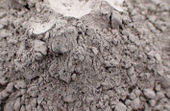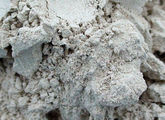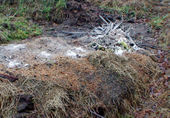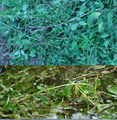Fertilizers
From eagle-rock.org
Topic in Gardening courses
Fertilizers provide, in varying proportions:
- six macronutrients: nitrogen (N), phosphorus (P), potassium (K), calcium (Ca), magnesium (Mg), and sulfur (S)
- seven micronutrients: boron (B), chloride (Cl), copper (Cu), iron (Fe), manganese (Mn), molybdenum (Mo), and zinc (Zn).
Chunks of information
- Nettle muck-water or nettle fluid manure. This is fermented nettle extract of nettle leaves and stems. The fluid manure contains nitrogen and minerals and promotes soil biodiversity and the growth of plants. Fill up a barrel or a large bucket or ton with nettles and water. It's possible to add some sugar to speed up the fermenting process. After about one week the manure is ready. Dilute it with water 1/10 and sprinkle it over plants or pour it next to plants that need rich fertilization. It protects plants against greenfly, acts as a fungicide and is a fast fertilizer for plants that need something extra during their growth. Adding some hands full of lava flour or lava dust (ground lava stone) helps against the bad smell and also gives extra minerals to the fertilizer. Lava flour sprinkled over plants strengthens the plants skin to help them fight against harmful fungi.
- Sawdust can be used as fertilizer in your garden. It improves the structure of the soil. But be careful, because the micro-organisms that convert the sawdust need extra nitrogen during a few months. Sawdust is low in nitrogen, therefore it is advised to add a nitrogen fertilizer with the gift of sawdust if your plants need nitrogen during this period.
- March 21, 2011 - Today i sowed a fine layer of basalt flour over my gardens. Not so many people know how to use this fertilizer. Basalt flour is finely or more coarsely ground basalt. Lava flour has the same effect as basalt flour. This type of rock is full of minerals and energies from the inside of the earth. They provide the soil with trace minerals of which many soils are depleted. Lava or basalt flour can be added to the compost or sprayed directly over the garden. It is also possible to cover the leaves of plants and trees and bushes with a fine layer of this dust. The plants will feed themselves through the leaves. It also prevents many plant diseases. When a garden has a sufficient amount of this material, the plants will be healthy and the leaves will shine and be colored dark green. By eating such vegetables we get plenty of trace minerals for our body and our immune system will be strengthened. I once read a story about a village where most people reached a high age in good health. Their fields were irrigated with river water that flowed through volcanic mountains. The vegetables that grow in a soil rich of volcanic elements do taste much better too.
Gallery
See also
External links
- 12 Organic Fertilizers & Natural Bug Repellants such as manure, nettle tea etc.
- Basalt flour Research Topics
- Bentonite Wikipedia
- Choosing a Soil Amendment "Soil amendments improve the physical properties of soils. Amendments are mixed into the soil." - Colorado State University
- Co-utilization of rockdust, mineral fines and composte Working towards integrated resource recycling and use Robin A.K. Szmidta & John Fergusonb 2004 - PDF document 36 pages
- Earth Regeneration Society
- Fertilizer Research Topics
- Fertilizer Wikipedia
- How to Garden With Sawdust in the Soil eHow.com
- Making Use of Sawdust Suite101.com
- Organic fertilizer Wikipedia
- Organic fertilizers PDF file with a list of organic fertilizers, by Colorado State University
- Remineralize the Earth is a nonprofit organization assisting the worldwide movement of remineralizing soils with finely ground rock dust, sea minerals and other natural and sustainable means to increase the growth, health, and nutrient value of all plant life.
- Sawdust as fertilizer Research Topics
- Wood Ash in the Garden





